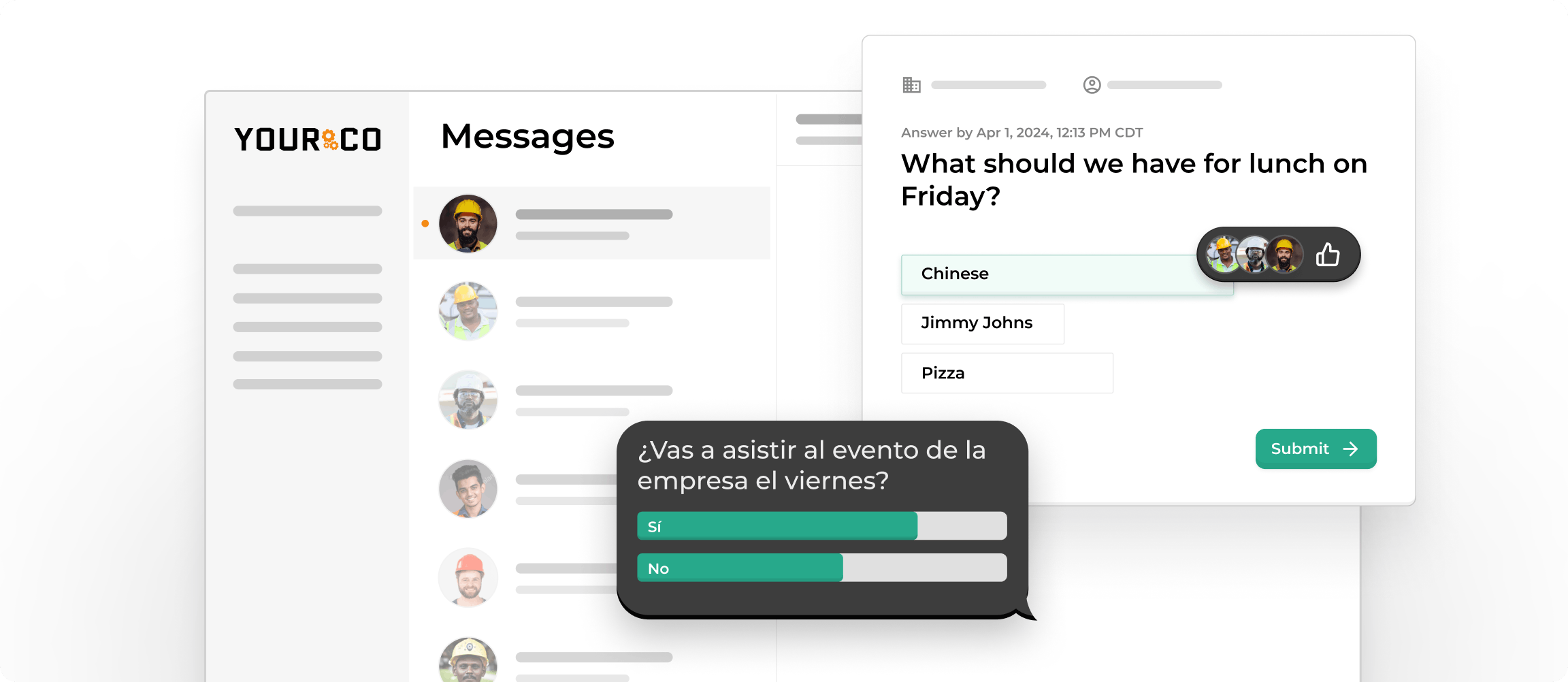The Cost of Underutilized Benefits: What HR Should Know and Can Do Now


You pour a quarter of every wage dollar into benefits, yet a big slice never reaches the people it's meant to help. Studies show employers spend 20–30% of payroll on benefits, while 20–40% of that spend goes unused.
For a mid-sized company with $50 million in annual wages, that benefit budget sits around $12–15 million. When even 25% of those dollars go unused, $3–4 million disappears each year — money that could fund new headcount, equipment, or wage increases instead of languishing in forgotten programs.
The waste doesn't stop just at the balance sheet, either. When employees skip preventive care or fail to tap financial wellness tools, productivity drops, turnover climbs, and healthcare claims soar. Workers who feel financially strapped are more likely to report poor health, driving up plan costs and absenteeism.
Meanwhile, billions in supplemental reimbursement — from accident coverage to hospital indemnity — sit unclaimed every year. You can reverse this trend. Clear, well-timed communication and text-based education lift participation rates quickly, turning sunk costs into genuine value for both your people and your budget.
Calculate Why Unused Benefits Drain Your Budget
Understanding the true cost of benefits underutilization starts with recognizing the double hit to your bottom line. You’re committing roughly 20–30% of total wages to these programs, yet when a quarter or more of that investment never reaches employees, you’re paying twice — once for unused coverage and again for the problems this creates.
For example, with a $50 million payroll and a typical 25% benefits allocation, you’d set aside $12.5 million. If even 25% sits idle, $3.1 million disappears annually in prepaid benefits employees never use.
For companies that rely on self-funded employee benefit plans, the cost of underutilization shows up differently. Instead of overpaying carriers, employers face avoidable medical claims when employees skip preventive care, wellness support, or financial tools. Self-funding gives these companies more control over plan design and spend, but it also means they directly absorb the higher claims costs that underutilization creates.
Across both models, the ripple effects compound the waste. Workers who don’t engage with their benefits drive higher healthcare claims, greater stress, and costly turnover.
Effective employee communication becomes critical to breaking this cycle, especially with frontline teams who lack email access and miss critical benefit updates sent through traditional channels.
Calculate both impacts with this formula:
- Annual Benefits Budget × % Underutilization = Direct Waste
- (Average Replacement Cost × Voluntary-Turnover Increase) = Hidden Costs
Common underutilized benefits include:
- Unused EAP counseling sessions
- Forfeited preventive-care credits and wellness incentives
- Unclaimed 401(k) matches and stock purchase contributions
- Unredeemed supplemental accident and hospital reimbursements
The root cause? A 2023 UK-based study by Towergate Health & Protection found that only 31% of employers surveyed believed their workforce fully understood available benefits. Close that communication gap, and you reclaim dollars already in your budget while boosting retention, health, and engagement simultaneously.
Launch Three Immediate Actions to Boost Benefits Today
Transform wasted benefits spend into meaningful engagement with three tactics that can raise participation rates:
1. Timed Text Campaigns
Deploy timed text campaigns that connect benefits to real moments in employees' lives. Schedule "Did-You-Know" messages around new hires, birthdays, or major life events. A text like "Just had a baby? Your hospital cash benefit can cover extra costs. Click link for details." gets seen. SMS enjoys up to 98% open rates compared with roughly 20 percent for email.
2. Instant Translated Responses
Enable instant translated responses that eliminate language barriers immediately. Address your most frequent questions (e.g., "What counts as preventive care?" "When does 401(k) matching start?") in messages that translate automatically to Spanish, Tagalog, Mandarin, or whatever languages your team speaks. When information arrives in someone's native language, they're far more likely to act on it.
3. Peer Benefit Champions
Establish peer Benefit Champions who can answer questions naturally during daily communications. Select respected employees across departments and equip each with a 60-second script covering one key benefit.
Set weekly goals of just two hallway conversations. Coworkers trust guidance from peers more than formal HR announcements, especially frontline workers who rarely check company email.
Modern SMS platforms tie these strategies together seamlessly. Preload messages, configure translation rules, and send quick micro-surveys ("Used your free physical yet? Y/N") that reveal remaining confusion. With automation handling routine tasks, your team focuses on helping employees claim benefits you're already funding.
Execute Your Lifecycle Action Plan: Onboarding, Open Enrollment & New Benefit Launches
Strategic timing transforms passive benefit awareness into active engagement. Well-timed messages that match key moments in the employee journey help people use programs you already fund, turning expense into value.
Optimize Onboarding
Day 1 shapes everything that follows. Send a warm "welcome to your benefits" text immediately after paperwork processing: "Hi María, your medical, dental, and vision plans are active. Tap here for more information. Additional questions? Text 'HELP'." New employees see that support is one reply away, setting a helpful tone from the start.
During Week 1, highlight preventive-care benefits like free check-ups, vaccinations, or health screenings. Early engagement builds healthy habits while reducing long-term claims. Try: "Your plan covers a no-cost annual physical. Book before Friday and start earning wellness points."
At Day 30, run a brief pulse survey to catch lingering confusion: "Which benefit still feels unclear?" and "What would make it easier to use?" Target follow-up messages based on these responses, addressing gaps before they become costly oversights.
Streamline Open Enrollment
Begin with the same diagnostic SMS approach. Ask "Do you know what's new this year?" and "Do you plan to change plans?" These answers reveal where to focus education efforts most effectively.
Structure a four-week countdown campaign. Week 4 introduces key changes, Week 3 spotlights high-value options, Week 2 delivers FAQ answers through live sessions, and Week 1 provides daily reminders with deadline alerts. This progression keeps information manageable while maintaining urgency.
Supplement texts with carrier-hosted webinars. A thirty-minute lunch session followed by same-day SMS — "Thanks for joining our lunch session. Enroll by 11/30 here" — helps non-desk workers act immediately, bypassing email entirely.
Introduce New Benefit Launches
New programs often get overlooked when announced in a single email. Employees skim, forget, or miss the message altogether. A better approach is to share information over multiple touchpoints.
Begin with awareness:
- “A new financial protection benefit will be available starting Monday.”
Follow with clarity:
- “Introducing accident coverage — cash benefits paid directly to you.”
Invite employees to take action:
- “Click the link to learn more and review your options: [link].”
Demonstrate real-world impact. Share a short explainer video or a simple claim example that illustrates how the benefit works. Reinforce with SMS reminders at 30, 60, and 90 days to ensure no one misses the enrollment opportunity.
This steady rollout respects different work environments and communication preferences, while keeping benefits top-of-mind over time.
Deploy Multilingual, Frontline-Friendly Communication Tactics
When benefit information arrives in the wrong language or through ineffective channels, even the most valuable programs go unused. This communication breakdown hits frontline teams hardest, as they rarely check company email, depend on mobile-friendly updates, and often need content in languages other than English.
Text messages solve the delivery problem with superior reach, but the right words matter as much as speed. Clear, culturally aware language combined with automatic translation and thoughtful timing transforms simple SMS into actionable invitations.
Effective practices that eliminate communication friction include:
- Plain-language writing
- Automatic SMS translation into primary languages spoken on-site
- Visual supports: link to one-page infographics or brief explanatory videos
- Audio hotlines where employees hear information read aloud
Consider this comparison between complex HR copy and simplified, translatable text:
- Complex HR copy: "Your deductible resets on the first day of the plan year. Please review the Summary Plan Description."
- Simplified SMS: "Your plan's yearly costs reset Jan 1. Click on the link to see what's covered."
The first version demands legal knowledge; the second offers clear next steps.
Timing proves equally critical as language. Evening texts suit day-shift crews, but night teams need mid-morning messages. Effective scheduling includes launch reminders, midpoint check-ins, and 24-hour deadline alerts, which ensure enough visibility without overwhelming anyone.
This approach helps overcome the operational challenges that impact global HR effectiveness while connecting with non-desk employees through proven methods to reduce language barriers in workplace communication.
Track Success & Demonstrate ROI
Proving your communication efforts work requires tracking metrics that reveal behavior change, not just message delivery statistics. Focus on numbers that connect employee actions directly to business outcomes.
Start with participation rates for each major program (such as medical enrollment, 401(k) engagement, EAP usage, and wellness program adoption). Pull this data from your HRIS or monthly carrier reports. Rising participation rates show employees value what you offer; flat numbers signal continued waste. Supplement these with comprehensive wellness metrics that insurers already collect, plus absenteeism days, voluntary turnover percentages, and preventive care claims.
Establish baseline measurements using at least three months of historical data before launching communication efforts. Track the same metrics quarterly afterward, breaking down results by location or shift to identify where targeted follow-up is needed. When context is helpful, compare against industry benchmarks to gauge relative performance.
Calculate financial impact with this straightforward approach:
ROI = (Engagement Gain × Average Savings per Use) - Campaign Cost
For example, if EAP usage increases by 8% and each counseling session prevents $300 in medical costs, that improvement alone generates measurable savings. ROI calculation templates simplify the math further.
Schedule quarterly reviews to show leadership progress in real time. You'll capture quick wins, like higher flu shot uptake after fall reminders, and identify larger trends, such as reduced turnover at locations with strong retirement plan participation. Over time, connecting higher adoption to decreased healthcare costs and fewer absences builds the business case for continued investment in clear, timely benefits communication.
Get Maximum Benefit Engagement with Yourco
Rather than adding another potentially underused tool, Yourco addresses the core problem: getting critical benefit information to employees when and how they'll use it. Three key strengths make this possible — exceptional reach, automatic language support, and hands-off automation.
Text messages achieve what email cannot, as they land directly on devices people check constantly and get opened 98% of the time. When Yourco sends enrollment reminders or preventive-care nudges, virtually every worker sees them, from office staff to overnight warehouse crews. This reach is essential because even the most valuable program fails when employees never receive the information.
Auto-translation into 135+ languages and dialects removes comprehension barriers instantly. No more printing multilingual materials or depending on supervisors to interpret — the platform handles translation automatically, addressing the cultural and linguistic obstacles that significantly impact program participation.
Automation maintains consistent communication without constant oversight. Schedule campaigns for onboarding, open enrollment, and life-event triggers, then monitor real-time dashboards showing engagement metrics. Built-in polling turns every message into a feedback opportunity, revealing what's working before problems develop.
Try Yourco for free today or book a demo to see how smarter communication can reduce wasted benefits, boost participation, and create a healthier and more engaged workforce.
Frequently Asked Questions
Do all employees need smartphones to receive SMS benefits updates?
No. SMS works on any mobile phone, including basic flip phones. This universal accessibility makes text messaging ideal for reaching diverse workforces, including frontline employees who may not have smartphones or regular internet access.
Can SMS platforms handle multilingual benefits communication automatically?
Yes. Modern platforms like Yourco automatically translate messages into 135+ languages and dialects based on employee preferences stored in your directory. This eliminates the need for separate multilingual campaigns while ensuring every employee understands their benefits in their preferred language.
How do you measure the ROI of SMS-based benefits communication?
Track key metrics before and after implementation: enrollment percentages, preventive care usage, EAP participation, and voluntary turnover rates. Calculate savings from increased utilization and compare against campaign costs to demonstrate clear financial returns.
How often should HR send SMS updates about benefits?
Frequency depends on the stage of the benefits cycle. During onboarding and open enrollment, more frequent messages, such as weekly updates or countdown reminders, are effective. Between major events, monthly or quarterly texts that spotlight preventive care, wellness incentives, or underused benefits keep employees engaged without overwhelming them. Consistency and timing matter more than volume.




